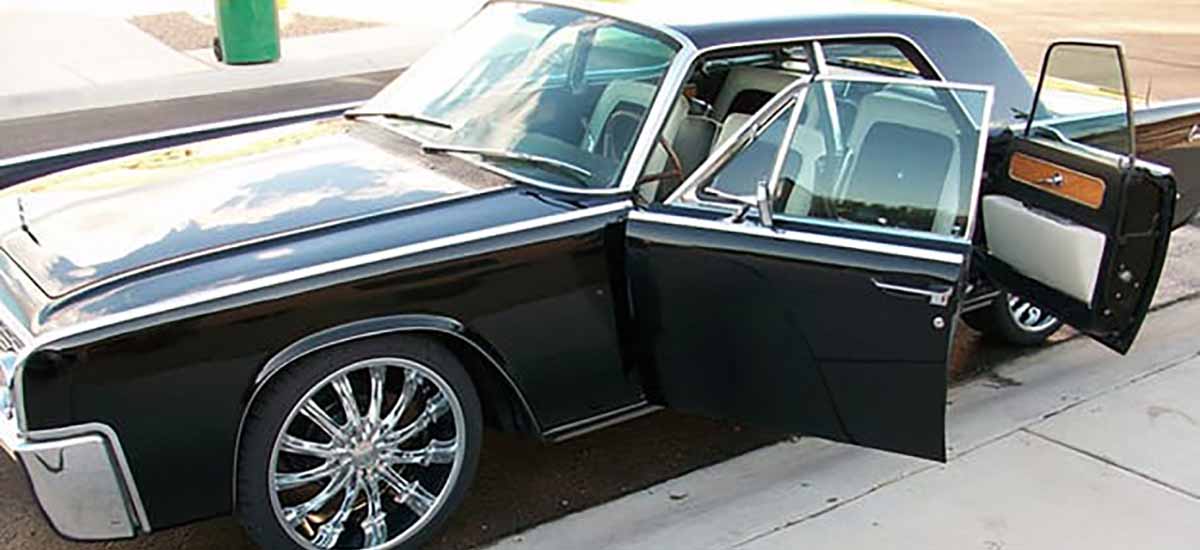
 Your Credit Estimate
Your Credit Estimate
 Your Credit
Your Credit
Your zip code helps us provide you with the most accurate vehicle pricing and vehicle availability.
We estimate your credit score to give you an idea of your monthly payments. To get an accurate payment amount, complete our credit application by clicking the Start Credit Application button below.
start credit application
Okay, we’re just gonna come out and say it. “What is with all the suicide doors lately?!” We don’t know why, but it seems like the latest trend in automobile design is something that was deemed unsafe nearly half a century ago. Some trends should stay dead, and suicide doors are one of them.
What ARE Suicide Doors?
Sometimes confused with butterfly doors (the DeLorean) or scissor doors (Chrysler Portofino), suicide doors are hinged so that the front doors open as they normally would, but the rear doors open towards the back. What this does is open the entire side of the vehicle, lending to easy access in and out. Okay, what’s wrong with that?
First, let’s look at how the term came about. This door design was deemed “suicide doors” due to the high possibility that the accidental opening of such doors led to the driver and/or passengers being ejected from the vehicle. They were also popular in the gangster era to toss out weasels with ease. A lot of this happened in the pre-seatbelt era, where a gust of wind and a bumpy road could lead to certain doom.
What drives us crazy though, is the recent comeback of suicide doors even with aforementioned safety concerns. The 1961-1969 Lincoln Continental made them famous; the ol’ 1964 Chrysler Imperial had them and so did the 2013 Chrysler 300; they popped up on Kia’s Telluride SUV at the 2016 North American International Auto Show (also known as the Detroit Auto Show); and this year Nissan, Lexus, and several other brands had suicide door car concepts. It seems everyone is glossing over the huge potential safety risk of suicide doors- where’s the side impact beam?
T-bone Steak
Side impact beams, also known as pillar B, or the pillar between the front and rear doors, are the only thing standing between passengers and a side collision. Typically made out of steel or strong aluminum, side impact doors are made to absorb the energy transferred in an incident, prevent another car from ripping through the middle of the vehicle, and if designed to do so, act as a small crumple zone. When it comes to suicide doors, or the Chrysler Portal’s “elevator doors”, there’s no protection.
In the event of side impact, getting t-boned or side swiped, what’s going to stop a moving car? Your passengers. Friends, family, children - apparently expendable in the search for style. Wasn’t the auto industry up in arms about safety in the last few years? All these automatic safety features - forward collision warning, automatic braking, park assist, cross-traffic alert, blind spot monitoring, all of this to improve the safety of the average automobile. Removing a key part of the auto body construction to look cool feels like a couple steps back from all that.
Today, suicide doors are built so that the rear doors don’t open unless the front doors open first - basically child-lock doors, a safeguard that would most likely be a hindrance to adult passengers. Regardless, we can’t really see why they’re so popular given the sacrifice of the side door pillar. Unless those suicide doors are built from titanium and can stop a freight train, then who cares about the cool factor when you’re about to become t-bone steak?
Let us know what you think of this new trend in automobile design. Do you like it or hate it? Does the loss of safety concern you? Is looking cool really worth it?
Photo Source: complex.com